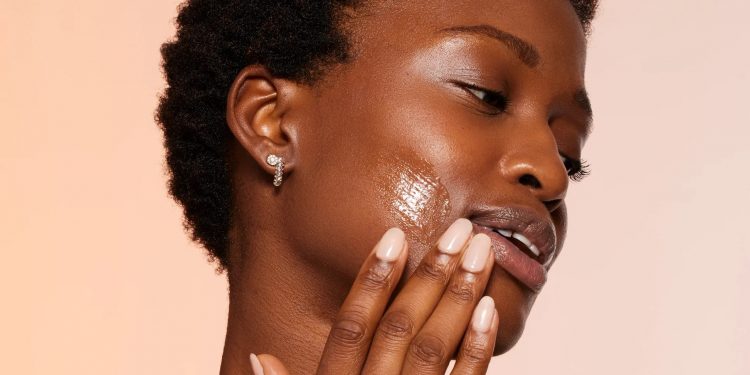Here are 3 retinol alternatives for when you just don't feel like using one. Celebrities, doctors, and dermatologists all love retinoids, but some people do not like them at all. Retinoids can cause irritation and peeling, especially on sensitive skin. When they are not used carefully, they can do more harm than good. If you're someone who can't tolerate retinoids or don't want to use one, here are three different alternatives for retinoids. We're also going to explain how they work on your skin.
Beta carotene
First, let's start with beta-carotene. Beta-carotene is found in carrots, but you can also put beta-carotene on your face. Beta-carotene is a carotenoid, and it's found in carrots. When beta-carotene is ingested or put on the skin, your body transforms it into vitamin A, another name for retinoids. Retinoids are an umbrella term, which includes retinoic acid, retinaldehyde, and retinol. Retinoic acid is the most potent form, and it's made in our eyes as well. You can also get it as a prescription from your doctor or derm. However, some people don't want to use these, making beta-carotene a better and more gentle option. Your body transforms beta-carotene into vitamin A, and it uses beta-carotene to create vitamin A inside the body.
More simply, for the body to make retinoic acid, it needs to have the previtamin, beta-carotene, to do that.
April Skin Carrotene Clarifying Serum - $28
This is a carotene serum that Cassandra loves because it's made for oily and breakout-prone skin. This not only has beta-carotene, but it also has niacinamide. And because it's a K beauty formula, it's gentle. On the other hand, some niacinamide formulas are too potent and irritate people's skin. Fortunately, this one is very gentle and is a fantastic option for those who do not want to use retinoids.
The Inkey List SuperSolutions Acne Clearing Moisturizer 2% - $19.99
This product is also popular, especially because of one the ingredients is Novoretin. This product has Novoretin of 2%. Novoretin is a patented molecule, and it's only recently been used in cosmetic products. Novoretin comes from certain shrubs or bark. When you cut this bark, it leaks. It's very similar to the collection of maple syrup. The shrub is called pistacia lentiscus, and it's native to Greece. When its sap is extracted, it's made into Novaretin by cosmetic manufacturers. Then, it's sold to companies like The Inkey List.
How does Novaretin work?
Novaretin works in a very unique way. Although there aren't a ton of medical studies on this ingredient, it seems to help your skin produce retinoids more effectively.
Unlike beta-carotene, it does not turn into a retinoid once absorbed by your skin. It actually tells your skin to make more retinoids. And if your skin is making more retinoids on its own, you can bet that you're going to benefits like supple and renewed skin from Novoretin.
The Novoretin moisturizer from the Inkey list is made for acne-prone skin. Other skin products have Noveretin as well that aren't necessarily for acne, but they target wrinkles, hydration, or overall skin health. Novoretin can be a great option if you want to support your skin in the process of making what it needs.
Bakuchiol
Bakuchiol is a gorgeous, purple flower, and a lot of people have seen amazing benefits from it. People say it's a retinol alternative because it helps with wrinkles, fine lines, acne, and scarring. However. It's not medically proven to treat any of them.
However, many people have tested it on their own in comparison to retinol. They observed that bakuchiol is not as intense or irritations retinoids, but simultaneously, it gives some of the same benefits of wrinkle reduction and luminosity. It's also hydrating, and likewise, bakuchiol has become a new trend in Western skincare.
But, in other parts of the world, bakuchiol has been used for a very long time. Chinese medicine studied how Bakuchiol worked on the skin before it was ever put into cosmetics.
How does Bakuchiol work?
There are some studies on how bakuchiol works. Some studies showed that bakuchiol increases the elasticity and firmness of the skin. Some studies show that Bakuchiol reduces wrinkles, pigmentation, and even photo damage. And even though it doesn't work like a retinoid, it can still create intrinsic changes that lead to luminosity, firmness, and elasticity in the skin.
Scientists believe bakuchiol works because it can support our fibroblasts. Fibroblasts secrete collagen proteins and help maintain the structural framework of tissues. Bakuchiol also has more antioxidants, and it's more photostable, meaning it doesn't degrade under light as easily and becomes irritating. It's something you could use during the day or underneath sunscreen. On the other hand, it's best to use a prescription-strength retinoid at night. Bakuchiol has also been known to decrease inflammation, making it beneficial to acne.
Ole Henriksen Goodnight Glow Bakuchiol Sleeping Crème
There are not a ton of medical studies on bakuchiol, but there is a good amount, and the ingredient shows a lot of promise. So, if retinoids are not for you, but you want the benefits, this could work. Beta-carotene and Novaretin could also work, beta-carotene being the strongest antioxidant. Overall in regards to retinol alternatives, these are three of the best ingredients.




